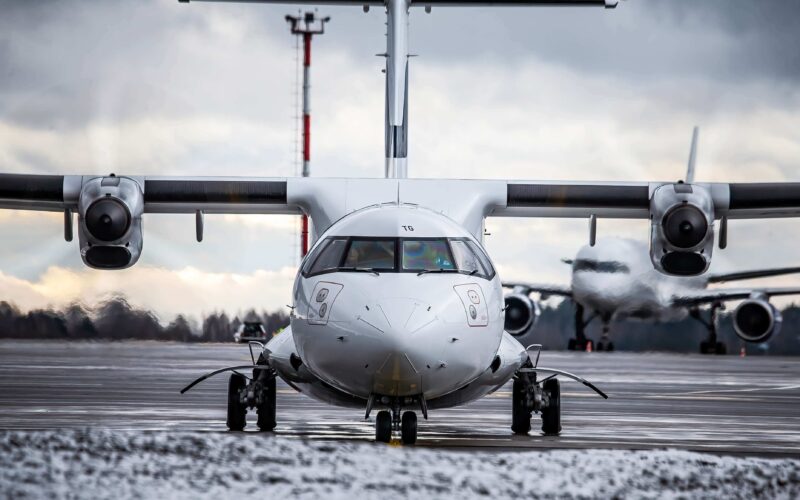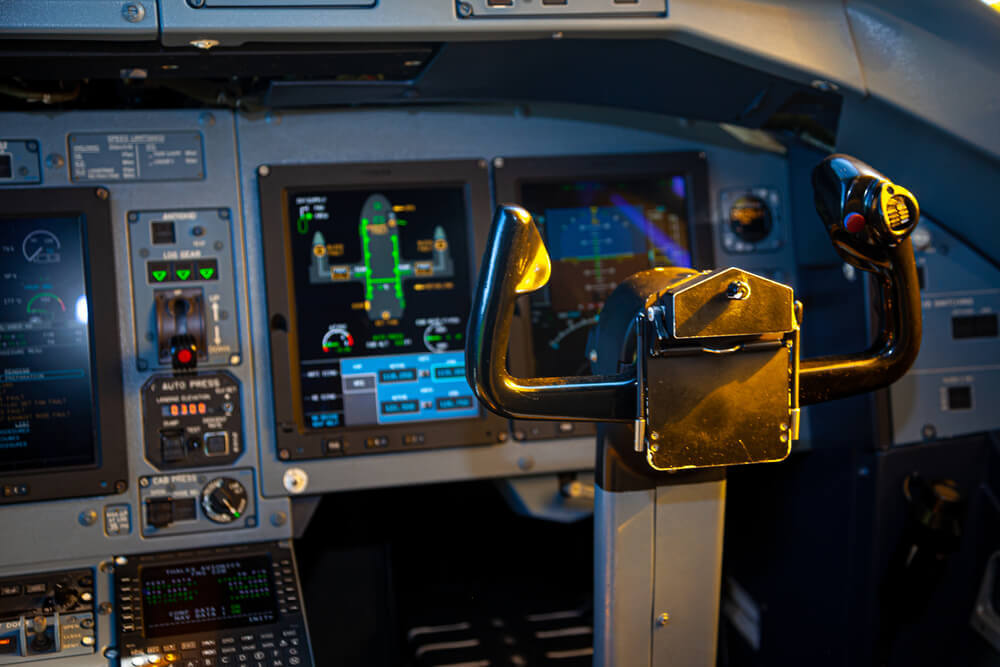On October 27, 1988, the ATR 72-300 conducted its first flight. The type, a stretch of the smaller ATR 42-300, entered service with Finnish operator Finnair one year later in 1989.
Pitched as regional aircraft, the ATR turboprops have proven popular among airline carriers with over 1,800 aircraft sales to more than 200 operators across the globe.
Major operators include Wings Air, Air New Zealand, Canadian North, and Indigo.
Origins of ATR
In 1981, Aérospatiale and Aeritalia – now Airbus and Leonardo – launched a joint venture and formed ATR (Avions de transport régional / Aerei da Transport Regional).
The aim of the partnership was to develop a new regional airliner. By 1984, ATR had introduced the ATR 42-300 model capable of seating 48 passengers with a maximum range of 831 km.
The first ATR 42 was delivered to French launch customer Air Littoral in 1985.
ATR flight deck. Image: Real_life_photo / Shutterstock.com
Design
The ATR aircraft design is a high-wing, t-tail powered by Pratt and Whitney turboprop engines. A turboprop consists of a turbine engine which drives a propeller.
The propellers are constant speed (variable pitch), meaning the angle between the propeller blades and the relative airflow changes through different flight phases to maintain an optimum angle of attack, increasing in pitch as speed increases.
Variable pitch propellers greatly increase fuel efficiency and aircraft performance, and can generate reverse thrust on touchdown.
Image: sippakorn / Shutterstock.com
Today, there are two passenger variants of the ATR in production:
ATR 42-600
Seating 48
Range 1,326 km
MTOW 18,600 kg
ATR 72-600
Seating 72
Range 1,528 km
MTOW 23,000 kg
Turboprop capabilities
Turboprops are well suited to short and very short regional operations, being more economical at low altitude over shorter distances than comparable jet aircraft.
The ATR aircraft are capable of landing on short, narrow and even unpaved surfaces, appealing to airlines flying remote routes without significant airport infrastructure.
The design of the ATR, with a profile close to the ground, allows passengers to embark and disembark via airstairs fitted into the door, removing the need for airbridges or ground equipment.
For the smaller -42 model, cost benefits include the legal requirement for only one cabin crew member as the aircraft is fitted with less than 50 seats.
The latest -600 models have a full-glass cockpits with the latest technology including ATRs ClearVision.
ClearVision uses forward facing infrared cameras mounted on the nose of the aircraft to provide the pilot with clear visibility even in the worst of low visibility operations such as mist and fog.
ClearVision is currently being trialed with Guernsey’s Aurigny Air Services on its fleet of ATR-72s.
Freighter
In 2017, ATR launched the ATR 72-600F, a purpose-built regional freighter capable of carrying up to 9.2 tonnes as far as 1,908 km. Launch customer FedEx placed an order for 30 aircraft plus 20 options.
There are currently 150 ATR freighters in service. ATR also offers retrofit freighters from previous passenger models.
ATR 42-STOL
ATR recently launched the ATR 42-STOL (short takeoff and landing). The upgraded series is capable of using runways under 1,000 m in length. At maximum landing weight, the aircraft can land in as short a distance as 810 m.
The STOL version is currently undergoing flight testing and certification with first deliveries expected in Q4 2024



